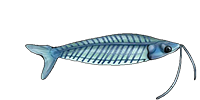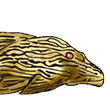Doi: https://doi.org/10.1089/zeb.2018.1612
Abstract
Hypostominae is the largest subfamily of Loricariidae, and is widely distributed throughout the Neotropic. In the present article, we analyze three Loricariidae species that were considered part of Hypostominae, from three different tribes, to discuss chromosome evolution in this fish group and to review the existent data for the subfamily. Rhinelepis aspera had 54 chromosomes (20m + 26sm+8st), whereas Pterygoplichthys ambrosettii and Megalancistrus parananus had 52 chromosomes, with 16m+24sm+8st+4a and 18m+24sm+10st, respectively. The karyological data were compared with existent phylogenetic hypotheses, indicating a common ancestor with 2n = 52 chromosomes for the Acanthicus, Hemiancistrus, and Peckoltia clades, as well as for Hypostomini. Shared recurrent characteristics of the tribes are discussed, as well as peculiarities of genera Ancistrus and Hypostomus. We propose that the occurrence of fragile sites demonstrated for Ancistrus facilitated chromosomal rearrangements that decreased the proportion of metacentric/submetacentric chromosomes and the diploid number in many species from this genus. Although Hypostominae is usually considered a subfamily with derived chromosome features, our revision shows that this is valid only for Hypostomini and Ancistrini, which have a divergent chromosome evolution from other tribes that seems to conserve plesiomorphic features.




